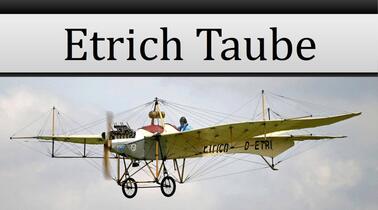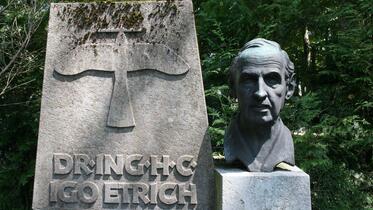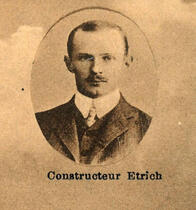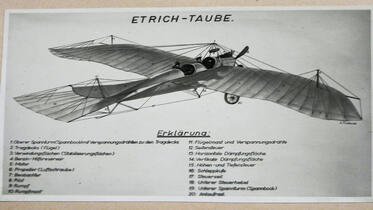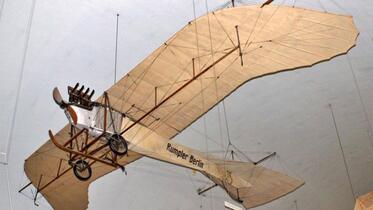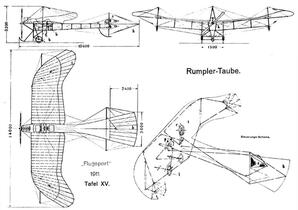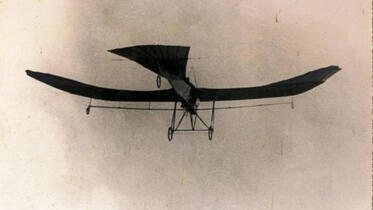Igo Etrich
Igo Etrich was an aviation pioneer and designer. During the construction of his first glider in 1905, he was inspired by a natural pattern - the seed of the tropical gourd Zanonia. Its seeds have a stable aerodynamic shape with excellent flight properties, so when the fruit ripens in a gliding flight, they fly into their surroundings. His next model, this time based on the silhouette of a flying pigeon (Taube – The Dove), brought him worldwide fame. During the air show in 1910, it was presented in front of Emperor Franz Josef I and 50,000 spectators at Wiener-Neustadt Airport, and at the beginning of the First World War it was the most widespread training plane of the German Air Force.

Ignác Etrich was born in Trutnov - Horní Staré Město on December 25, 1879, into the important textile family of Etrich, as the son of Ignác Etrich the Elder. Later, young Etrich became known as Igo, so that people could differ the father from the son because of their same names.
Igo, together with his father, proposed technical improvements to his companies from a young age. Many new machines for processing flax and jute were developed, which made the work of the labors easier and at the same time increased the production of spinning mills. Many of his inventions were protected by patents before the First World War, not only in European countries, but also in the United States, for example. Another one of Etrich´s projects was the construction of a dam reservoir in the valley of the river Úpa, to prevent frequent spring flooding.
However, Igo Etrich achieved the greatest fame for his inventions in the field of aviation. Together with a native of Žacléř, Karel Illner, Etrich's work leader and a gifted pilot, he built an aviation development workshop in a spinning mill in Trutnov, and his aircrafts soon became a household name. It was so successful that from 1912 another factory had to be opened, this time in Lubawka in Poland, called ETRICH FLIEGERWERKE LIEBAU.
Etrich became a very famous personality, especially in Austria. His face appeared on postage stamps and various promotional materials.
After the end of the First World War, the textile industry began to decline. The factories were struggling to survive, and although aviation was booming, Igo Etrich was unable to compete with the big manufacturers. He owned the spinning mill in the Upper Old Town until the end of World War II, when it was nationalized and in 1946 Etrich and his family were expelled out of the country. Almost without funds, he settled in Schwarzbach, Bavaria. He died on February 4, 1967, at the age of 88. He is buried in an honorary grave in the city cemetery in Salzburg.

